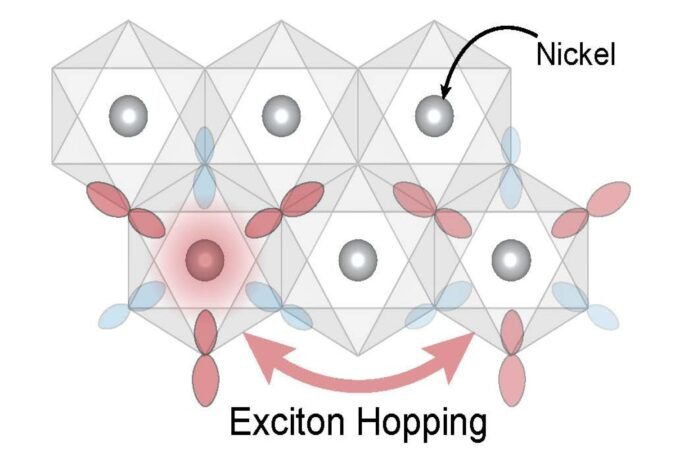Fast Facts
-
New Insights on Exotic Particles: MIT physicists unveiled critical findings about excitons in nickel dihalides, revealing their role in a unique form of magnetism originating from ultrathin materials, which could revolutionize future electronics.
-
Chemical Control of Excitons: The team demonstrated that excitons can be controlled by chemically tuning the halogen layers in nickel dihalides, leading to new methodologies for manipulating magnetic states through light.
-
Exciton Propagation Discoveries: Contrary to previous beliefs, the researchers found that excitons are not confined to nickel atoms but can hop throughout the material, highlighting their significant impact on the material’s magnetic properties.
- Advanced Research Method: The use of resonant inelastic X-ray scattering (RIXS) at Brookhaven National Laboratory was pivotal, enabling direct measurements of exciton behavior and paving the way for a deeper understanding of similar nickel-based materials.
Physicists Uncover New Insights into Exotic Particles Critical to Magnetism
Boston, MA – Physicists at MIT, along with collaborators, have made significant discoveries that could reshape our understanding of magnetism and its applications. They focused on exotic particles known as excitons, which play a vital role in magnetism, particularly in ultrathin materials only a few atomic layers thick.
These findings appeared in the July 12 issue of Physical Review X. The research team utilized a powerful tool at the National Synchrotron Light Source II at Brookhaven National Laboratory to conduct their studies. This innovative approach allowed them to explore the microscopic origins of excitons in nickel-based materials.
"We’ve developed a new research direction into these magnetic two-dimensional materials," said Riccardo Comin, the study’s leader and an associate professor of physics at MIT. He noted that the advanced technique, resonant inelastic X-ray scattering (RIXS), is essential for this research.
The team concentrated on nickel dihalides, a type of magnetic material. These are composed of nickel atoms sandwiched between halogen atoms like chlorine, bromine, and iodine. When exposed to light, these materials reveal fascinating magnetic properties.
Excitons are created when light excites an electron, leaving behind a "hole." Surprisingly, this electron and hole remain connected and can interact. The MIT team discovered how to control these excitons by chemically altering the halogen atoms in the materials.
"We identified the exact energies necessary to form excitons," said Connor A. Occhialini, a graduate student and co-first author of the paper. This step is crucial for harnessing light to monitor the magnetic properties of materials, which could pave the way for advanced electronics.
The researchers found that excitons do not just stick to nickel atoms; they can move throughout the material. This "hopping" behavior offers new insights into how excitons interact with the magnetic properties of the material. "This observation provides a window into understanding their interplay with magnetism," Occhialini explained.
The successful use of RIXS at Brookhaven proved critical for these discoveries. Only a few facilities worldwide possess such high-energy-resolution instruments. The capability to directly observe excitons enables further exploration of nickel dihalide systems.
This research could have far-reaching implications for technology development. Applications may include advancements in quantum computing, novel sensors, and new materials with unique electronic and magnetic properties.
Researchers believe these findings will accelerate the discovery of further materials like nickel dihalides and enhance their understanding of excitons. By engaging with these exotic particles, scientists can unlock new frontiers in materials science and technology.
The study also highlights the collaborative efforts between various institutions, including MIT, Arizona State University, Utrecht University, and Brookhaven National Laboratory. Such teamwork fosters innovation and pushes the boundaries of scientific knowledge.
As we delve deeper into this intriguing field, the potential for technological advancements continues to grow, transforming how we understand and utilize magnetism in the modern world.
Continue Your Tech Journey
Dive deeper into the world of Cryptocurrency and its impact on global finance.
Access comprehensive resources on technology by visiting Wikipedia.
QuantumV1
https://news.mit.edu/2024/physicists-report-new-insights-exotic-particles-key-magnetism-0801

